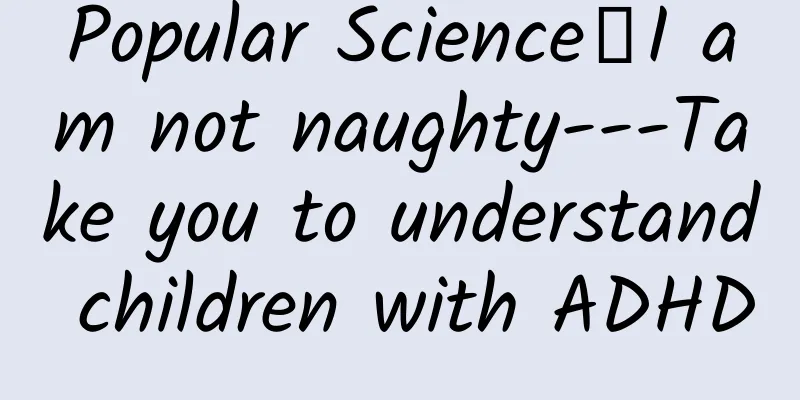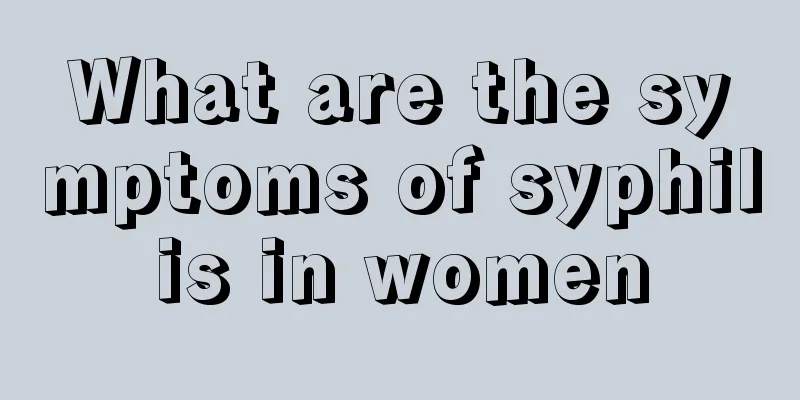Popular Science丨I am not naughty---Take you to understand children with ADHD

|
Some children often behave overactively in daily life, cannot sit still, are easily distracted in class, twist their bodies in their seats or even leave their seats without permission, lose things, are careless, have difficulty planning and implementing tasks, and have difficulty waiting in line. These behaviors may be manifestations of children's ADHD. These children are not deliberately naughty or disobedient, but their brains process external information differently from other children of the same age. Therefore, they need more understanding and support, appropriate treatment and help. Parents can try to communicate and interact more with their children, and seek advice from professional doctors to help their children better control their behavior. Let's get to know children with ADHD! 1. What is attention deficit hyperactivity disorder? ADHD, the full name of which is Attention Deficit Hyperactivity Disorder, is one of the most common neurodevelopmental disorders in children. It is characterized by inattention, hyperactivity, and impulsivity . In 66%-85% of children, ADHD may persist into adolescence and adulthood. The global incidence of ADHD in children is about 7.2%, and about 65% of children have one or more comorbidities. The prevalence of ADHD in children in my country is 6.26% (about 23 million people). ADHD not only impairs learning functions, but may also affect children's peer relationships and family parent-child relationships, and even cause emotional, psychological and sleep problems. 2. Early identification of ADHD 1. What is “inattention”? The time that normal children can concentrate varies at different ages, and as they grow older, their attention span gradually increases. An abnormality is only considered if the child's attention span is significantly shorter than the above and is significantly different from that of the majority of children in the class. 2. What is “hyperactivity”? (1) Frequent movement of hands and feet or twisting in seat (2) Frequently leaving seats when expected to stay in them (3) Frequent excessive activity in inappropriate situations (fidgeting) (4) Often have difficulty concentrating quietly on leisure activities 3. What is “impulse”? (1) Frequently answering questions before the speaker has finished speaking (2) Often have difficulty waiting in order (3) Frequently interrupting or disturbing others 3. Causes of ADHD 1. Abnormal brain development Abnormal brain structure and function, and dysfunction of chemicals such as dopamine and norepinephrine in the brain. 2. Other factors It mainly includes genetics, pregnancy and delivery factors, and environmental exposure. 4. What are the behavioral signs of ADHD at different ages? 5. What are the impacts of ADHD? 1. Learning dysfunction: Most children with ADHD have normal intelligence, but due to their inability to concentrate, they often have poor academic performance, unstable academic performance, and large fluctuations in academic performance, which becomes more obvious as they get older. 2. Difficulty in interpersonal relationships: Children with ADHD often behave in unpredictable ways and are prone to emotional outbursts, which can easily lead to conflicts and contradictions with others. Children are often criticized by their parents and teachers and rejected by their classmates, making it difficult for them to make good friends, which can lead to a loss of self-esteem and affect their school performance. 3. High incidence of accidents: Children with ADHD are born "adventurers". They act impulsively and lack forethought and planning. 50% of children with ADHD have a tendency to get into accidents. The risk of traffic accidents, drowning, etc. is greatly increased compared to ordinary children. 4. Comorbidity: More than 65% of children with ADHD also suffer from other developmental disorders and mental and psychological disorders. The most common ones are sleep problems and sleep disorders, language disorders, specific learning disabilities, tic disorders, anxiety and depression disorders, etc. 6. How to intervene in ADHD? The intervention methods are different for different age groups. (1) Children under 4 years old: Generally, children under 4 years old are not diagnosed with ADHD. If children under 4 years old have ADHD symptoms and it affects their social and psychological aspects, parent behavior management training (PTBM) is recommended. (2) 4-6 years old: Non-drug treatment is the preferred treatment, including psychoeducation, psychobehavioral therapy, special education and functional training, parent training and school intervention. (3)>6 years old: Comprehensive treatment combining drug treatment and non-drug treatment. There is no need to worry or panic about children with ADHD. Early identification and diagnosis, and long-term, personalized comprehensive treatment can help children optimize their learning/occupational functions, family functions, social functions and other functions as early as possible. References 1. Liu Jing, Zheng Yi. Interpretation of the second edition of the "Guidelines for the Prevention and Treatment of Attention Deficit Hyperactivity Disorder in China"[J]. Chinese Journal of Psychiatry, 2016, 49(3): 132-135. 2. Developmental Behavior Group of the Pediatrics Branch of the Chinese Medical Association. Pediatric expert consensus on early identification, standardized diagnosis and treatment of attention deficit hyperactivity disorder[J]. Chinese Journal of Pediatrics, 2020, 58(3): 188-193. END Author: Zhang Wenwen, Guo Haibin, Han Guangyan (Rehabilitation Center of Changzhou Children's Hospital) Reviewer: Kong Mian (Chengdu First People's Hospital, member of the Standing Committee of the Science Popularization Working Committee of the Chinese Rehabilitation Medicine Association) |
>>: This virus is spreading recently! 5 tips to protect yourself
Recommend
The lochia after childbirth is over and the water smells bad
Pregnant women have been checking their lives whi...
Will vaginal tightening surgery be painful?
Many women will experience varying degrees of vag...
What's up with endometrium 1.1?
Many female friends may know that the thickness o...
Myocardial infarction tragedies occur from time to time. How can we effectively prevent and treat them?
This is the 2862nd article of Da Yi Xiao Hu Cardi...
How many days after menstruation is it easier to get pregnant if you have sex?
Everyone knows that women will not ovulate during...
Learn this set of movements and say goodbye to "secrets that cannot be told"
It is well known that pelvic floor muscle trainin...
What is the cause of ovarian calcification?
Women often develop ovarian diseases for no appar...
Sexual positions and postures during pregnancy
Many doctors say that you cannot have sex during ...
There is a strange smell under the confinement
Most women are having children for the first time...
Presbyopia "targets" those born in the 1980s, and refractive surgery resolves the "midlife crisis"
Ms. Hu, 43, is facing this dilemma: She is still ...
What causes dizziness after childbirth?
After giving birth, new mothers experience signif...
[Medical Q&A] If the mother is infected with hepatitis B virus, how to prevent the baby from being infected?
Author: Hu Fang, deputy chief physician of Guangz...
"Every additional CT scan increases the risk of cancer by 43%" has become a hot topic! Should CT scans still be performed?
"For every additional CT scan, the risk of c...
Will I bleed if I catch a cold after a medical abortion?
If female friends choose to have a medical aborti...









